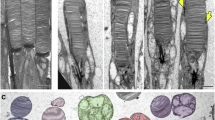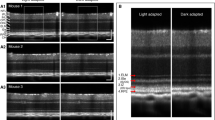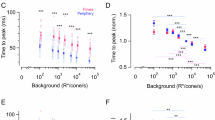Abstract
THERE is abundant evidence to show that the human eye has two distinct receptor mechanisms, one for vision in bright daylight and the other for vision at night. The sensitivity of the former, the photopic mechanism, is greatest for the longer wavelengths and is not much changed by dark adaptation. That of the scotopic mechanism is greatest for green and blue, and may be increased or reduced a thousand-fold by keeping the eye in darkness or light. From their distribution in the retina and in different animals, the cones are thought to be the photopic receptor organs and the rods the scotopic.
This is a preview of subscription content, access via your institution
Access options
Subscribe to this journal
Receive 51 print issues and online access
$199.00 per year
only $3.90 per issue
Buy this article
- Purchase on SpringerLink
- Instant access to full article PDF
Prices may be subject to local taxes which are calculated during checkout
Similar content being viewed by others
References
Chaffee, E. L., Bovie, W. T., and Hampson, A., J. Opt. Soc. Amer., 7, 1 (1923).
Author information
Authors and Affiliations
Rights and permissions
About this article
Cite this article
ADRIAN, E. Rod and Cone Responses in the Human Eye. Nature 154, 361–362 (1944). https://doi.org/10.1038/154361b0
Issue date:
DOI: https://doi.org/10.1038/154361b0
This article is cited by
-
Color sensitive responses in the human flicker ? ERG
Documenta Ophthalmologica (1964)
-
Electroretinal Photopic Sensitivity Curves
Nature (1954)



